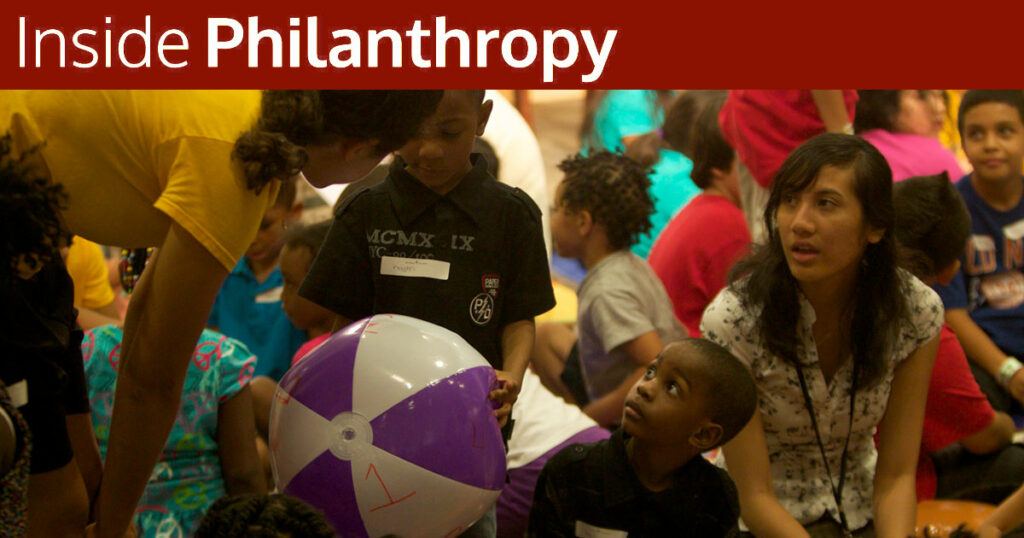Blog
Racial Equity and Justice in Education are “Drastically Underfunded” Research Finds

Originally published in Inside Philanthropy.
Just 0.8% of education philanthropy dollars were directed to racial justice from 2017 to 2019, according to research recently released by the Schott Foundation for Public Education and Candid. In an op-ed summarizing the results, the Schott Foundation’s Leah Austin and Edgar Villanueva calculated that “the philanthropic investment in racial justice works out to less than $2 per student.”
The Schott Foundation for Public Education describes itself as “a national public fund serving as a bridge between philanthropic partners and advocates.” The foundation’s mission is to build and strengthen a diverse movement in support of “fully resourced, quality Pre-K-12 public education,” and it is both outspoken and proactive in its support for communities of color, as IP has reported. In a recent op-ed in the Chronicle of Philanthropy, Schott President and CEO John H. Jackson called on philanthropists to support a federal racial-equity stimulus. “We’re at an inflection point in history,” Jackson wrote. “With greater public awareness of the economic as well as human costs of systemic racism, now is the time for philanthropy to act boldly.”
From racial equity to racial justice
The Schott Foundation worked with Candid to determine precisely what fraction of education philanthropy goes to racial equity and to racial justice. To distinguish between the two, the foundation used the definitions offered in the influential 2019 report “Grantmaking With a Racial Justice Lens,” by the Philanthropic Initiative for Racial Equity (PRE). (See IP’s past coverage of the report).
“The PRE report advances the idea that racial equity is an important starting point, but racial justice evokes a higher standard,” said Leah Austin, Schott’s director of the National Opportunity to Learn Network, in a video presentation announcing the findings. “Racial equity in K-12 grantmaking addresses the achievement gap. Racial justice in K-12 grantmaking goes further to address the underlying opportunity gap.”
To illustrate the difference, Austin cited specific examples: Grants for racial bias training for teachers, mentoring programs for students, after-school tutoring, and scholarships to low-income students would all be categorized as racial equity efforts. Racial justice efforts go further and might, for example, mobilize parents of color to monitor the use of a racial equity impact tool, support campaigns to end school policing, or push for transparency in school budgeting and recommend ways the money could be reinvested. Racial justice is “about building community power and mobilizing communities,” Austin said.
“Racial equity in K-12 grantmaking addresses the achievement gap. Racial justice in K-12 grantmaking goes further to address the underlying opportunity gap.”
The Candid numbers reveal that racial equity received more support from ed funders than racial justice, but both are “drastically underfunded,” according to the Schott Foundation. Of the $14 billion in total education philanthropy spending from 2017 to 2019, 10%, or $1.4 billion, went to racial equity; $109 million went to racial justice.
“For the first time, we can access the collective philanthropic impact of giving in the education sector through a lens of racial equity and racial justice, telling the story of what we prioritize and revealing blind spots in our collective response,” says the Schott announcement.
Geography of giving
The Schott Foundation’s findings underscore some of these blind spots. Candid data show that funding for K-12 racial equity and justice actually fell by 36% from 2011 to 2018, while overall philanthropic giving increased by 48%.
Schott and Candid identified distinct geographical differences in giving, as well. From 2017 to 2019, most funding for racial justice—63%—went to organizations based in the Northeast. Only 16% went to organizations in the South, even though 43% of all K-12 public school students of color attend school there. Seventeen percent went to organizations in the West, where 29% of public school students of color attend school.
Symphonies of equity
Today, many philanthropies are touting new programs to demonstrate their commitment to racial equity and justice, but there’s a long way to go, as IP has reported. The data from Schott and Candid provides a clear benchmark of where education philanthropy stands right now; it remains to be seen whether the new initiatives will make a difference in terms of actual investments—or significant change.
“If foundation investments in racial justice in education were a piano, we’re paying for a little more than half of one key,” Schott’s John Jackson said. “How, then, do we expect advocates to build symphonies of education equity, investing in only one note?… We have come up short, and we can do better.”
Photo by USDOE, BY-CC-2.0


